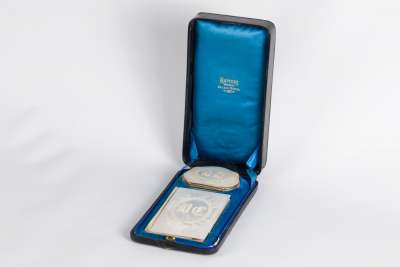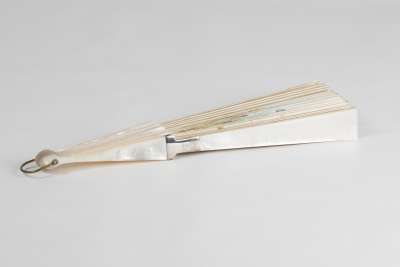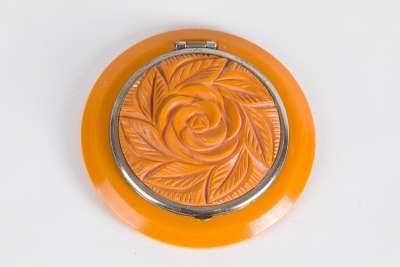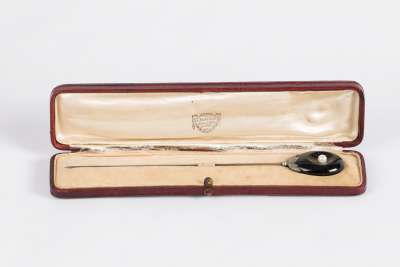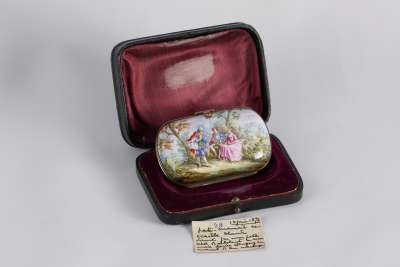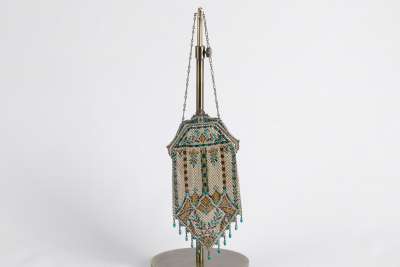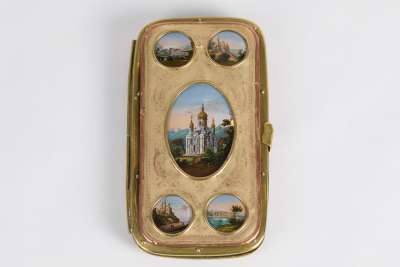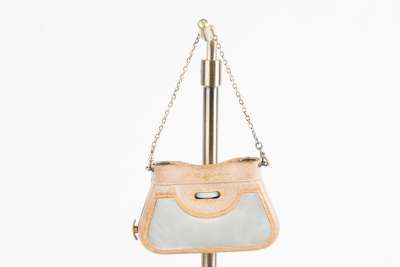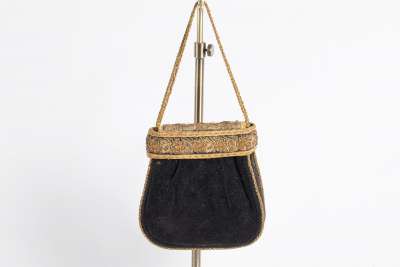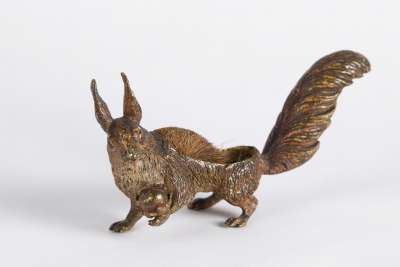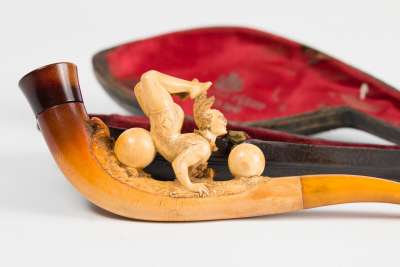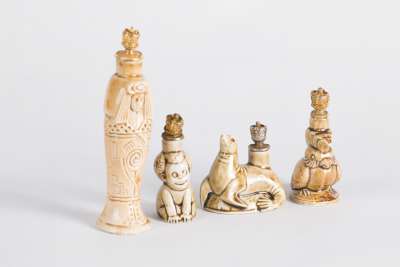This Plique-a-jour Floral Enamel Button, crafted circa 1920, is a fine representation of early 20th-century artistry. The button showcases a delicate design consisting of a predominantly purple background, created from small, rounded cells that suggest an intricate floral motif. The use of gilt metal filigree to outline each cell adds a rich texture and opulent feel. Interspersed within the purple background are green enamelled leaves, which appear gently undulating, connected by thin gilt metal filigree stems. A blue enamelled flower with gilt metal detailing serves as the focal point, drawing the eye with its vibrant hue. This piece is reminiscent of the Art Nouveau style, renowned for its organic shapes and intricate detailing, and demonstrates the exquisite craftsmanship of the era.
Condition Report
This Plique-a-jour Floral Enamel Button is in good condition, with minimal wear that is consistent with its age and use. The enamel retains its vibrant colours, and the gilt metal filigree remains intact with a slight patina that adds to its historical charm. There are no significant chips or cracks in the enamel, indicating careful preservation over the years. The button's structure is sound, with no evidence of repairs or modifications. This well-maintained condition enhances its appeal for collectors and those appreciative of historical craftsmanship.
Dimensions
Weight: 0.015gm, Length: 4cm, Width: 3cm.
A Unique Decorative Accessory
Originally intended as a decorative accessory, this plique-a-jour button would have adorned garments, adding a touch of elegance and sophistication. Its intricate design and vibrant colours would have made it a standout feature on any piece of clothing. Buttons like this were often used on high-end fashion pieces, demonstrating the wearer's appreciation for fine craftsmanship and attention to detail.
Art Nouveau Elegance
This button is a quintessential example of Art Nouveau design, a style that flourished from the late 19th century into the early 20th century. Art Nouveau is characterised by its use of organic forms, flowing lines, and intricate detailing. The floral motifs and the use of plique-a-jour enamel in this button reflect the movement's emphasis on nature and elegance. The interplay of colours and the transparency of the enamel are reminiscent of stained glass, a popular medium in Art Nouveau architecture and design.
The Craft of Plique-a-jour Enamelling
The technique of plique-a-jour enamelling, used in this button, involves filling a metal framework with transparent enamel, creating a stained-glass effect. Originating in France, this method was particularly popular during the Art Nouveau period. The absence of a backing allows light to pass through, illuminating the colours and adding depth to the design. The skill required to create such a piece involves precise application of enamel and careful firing to ensure the enamel adheres correctly without cracking.
Origin of Craftsmanship
While the specific maker of this button is not identified, it is likely crafted by an artisan well-versed in the techniques popular during the Art Nouveau period. The use of plique-a-jour enamel and gilt metal filigree suggests a maker with a high degree of skill and an understanding of the delicate balance required in such intricate work. Artisans of the time often trained in specialised workshops, where they honed their skills in metalwork and enamelling, producing pieces that were both functional and decorative.
Coloured by Collectors of Enamel Artistry
Buttons like this Plique-a-jour Floral Enamel Button are highly sought after by collectors of enamelled art and those with an interest in Art Nouveau design. Collectors appreciate the technical skill involved in creating plique-a-jour items, as well as their historical significance and aesthetic appeal. Such pieces are often collected for their beauty and craftsmanship, as well as their ability to capture the essence of an artistic movement that celebrated natural forms and intricate designs. This button is an exemplary addition to any collection focused on early 20th-century decorative arts.


